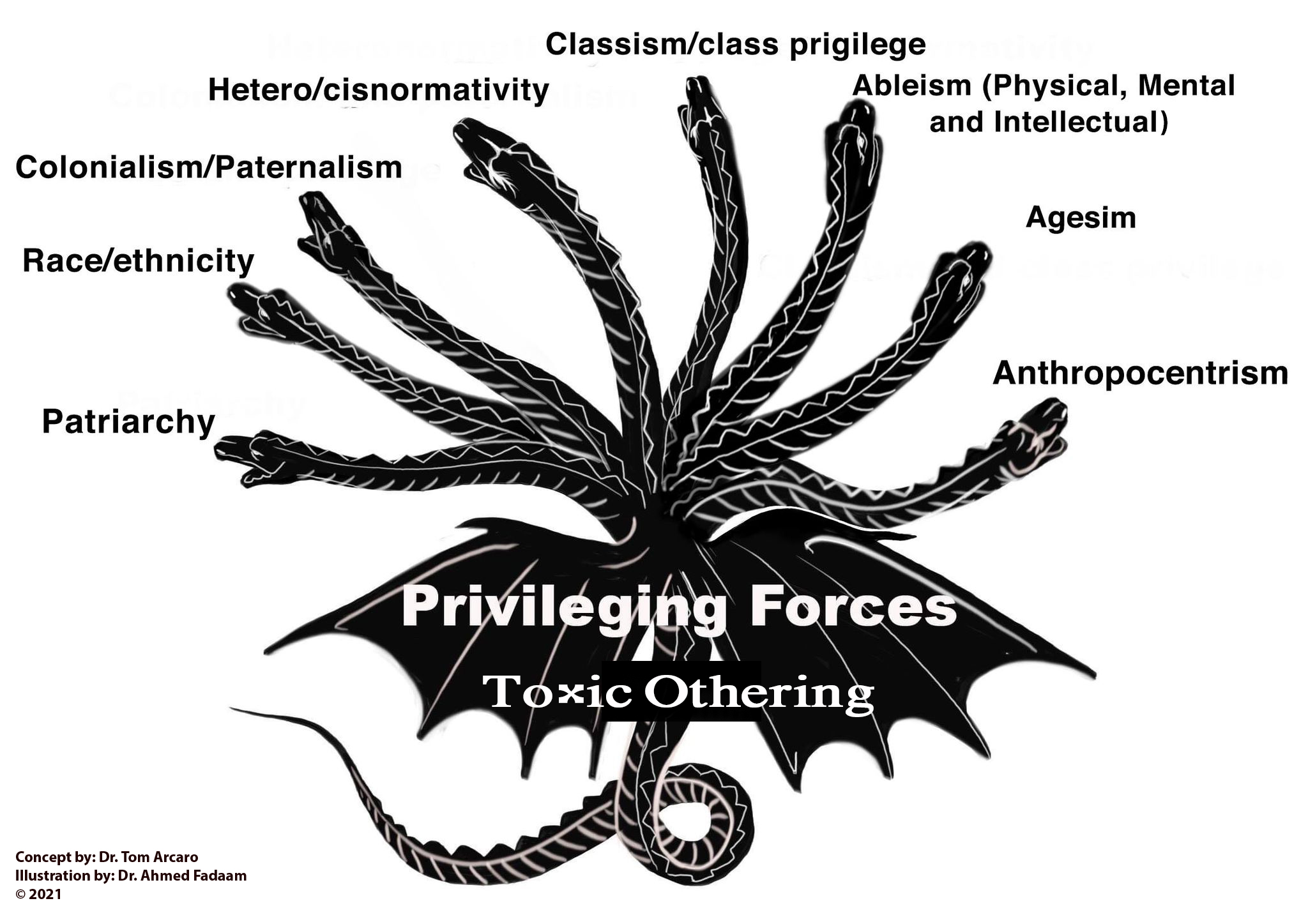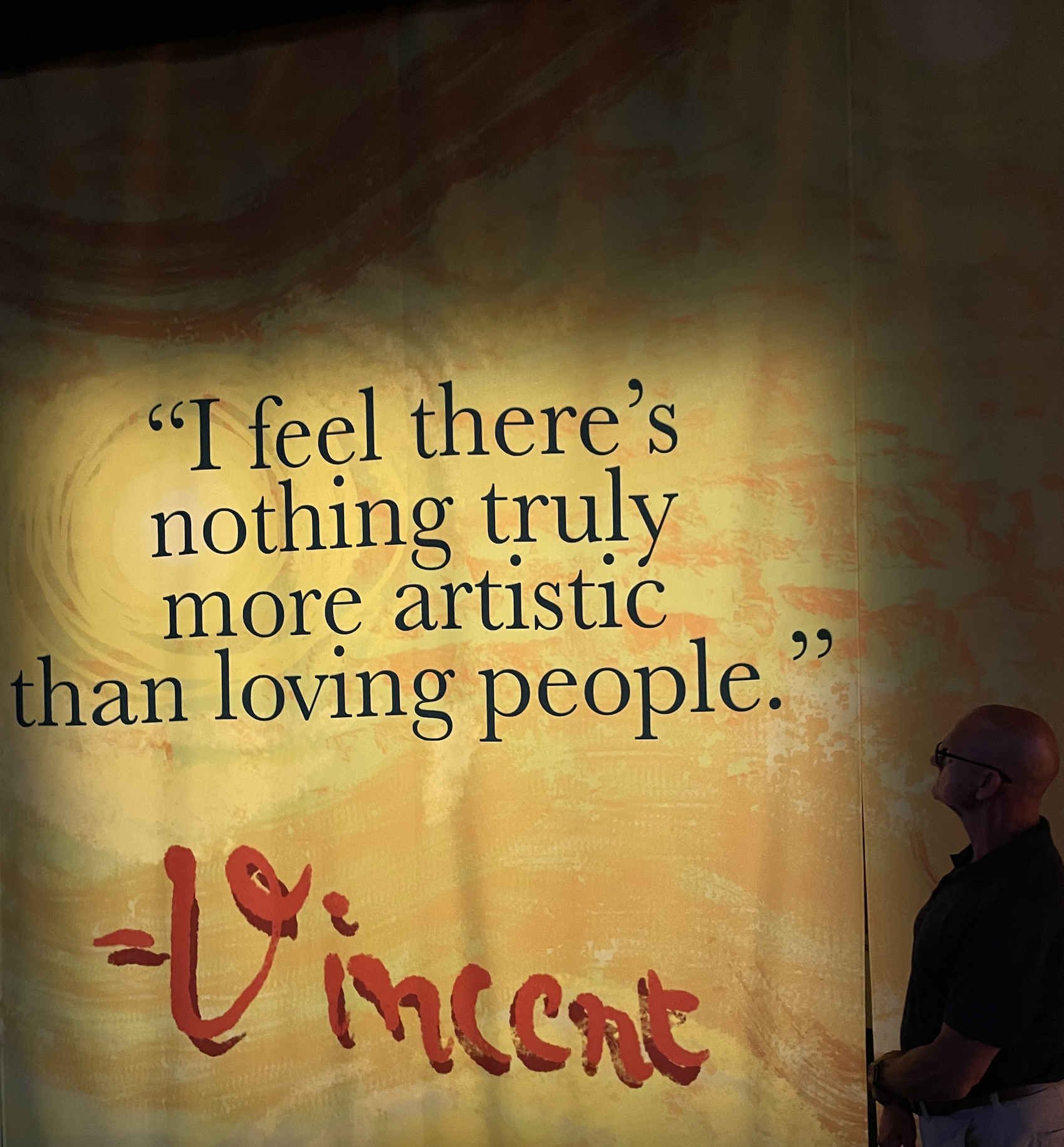Critical Hydra Theory
Deepening our understanding of ‘toxic othering’
Teaching an introduction to sociology class to Rohingya and Bangladeshi learners is an amazing experience. This class has tested my abilities as an educator, and for that I am thankful. Explaining topics like ethnocentrism and othering most definitely have stretched the limits of my pedagogical skills.
In a recent post I described how our class has gone thus far, and ended with a discussion of ‘critical Hydra theory’. I argued,
“Critical Hydra theory involves looking at how toxic and marginalizing othering is represented by all the heads of the Hydra and is evidenced in long standing norms, policies, and laws which have normalized and justified various forms of discrimination, exclusion, marginalization, and even genocide; toxic othering.”
In our WhatsApp chat one of my students asked,
“How to move or overcome from toxic othering to non-toxic othering?”
Student questions have always driven my analytical thoughts, and this one was truly inspirational.
Here is how I responded,

“One of your classmates recently asked a wonderful and very important question on our WhatsApp group and I want to take a few minutes to talk about this question. The question had to do with othering and toxic othering. The question essentially was, “How do we change from toxic othering to non-toxic othering?” There couldn’t be a better question, there couldn’t be a more important questions to focus on as we address the issue of our local problems and our international problems. The question is essentially about social change and how we can reconstruct some parts of our society which are toxic othering and address those norms and policies and laws and change them in a positive direction. An American cleric used the phrase’ bending the moral arc of the universe’ and he made the point that the direction of the moral arc is towards justice, and our job -these are my words- our job is too work in such a way that we move the directions of the moral arc toward justice. The moral arc of the universe is long but it does -and I believe in this- bend toward justice. And what this means, what this justice means is a world where toxic othering has been eradicated [that] toxic othering of other genders, of other races, of other ethnicities, to other people in general, that toxic othering is eradicated from the earth. As so our job as social thinkers, our job as people who are leaders in our community is to work in such a way such that we minimize toxic othering and maximize pathways that are non othering [or rather] non toxic othering. In short, getting rid of toxic othering is a huge job that we all need to participate in both on the individual level and on the organizational level. We need to encourage ourselves and everyone around us and all of the organizations to which we belong….we need to have them move toward a non toxic othering kind of set of norms, policies, and laws. Let us begin this journey together. (Here is the video version of my response.)
The original “moral arc” quotation comes from Theodore Parker, a Unitarian pastor in Lexington, Massachusetts. In a 1853 sermon he preached “I do not pretend to understand the moral universe; the arc is a long one, my eye reaches but little ways; I cannot calculate the curve and complete the figure by the experience of sight; I can divine it by conscience. And from what I see I am sure it bends toward justice.” The Reverend Dr. Martin Luther King, Jr. summarized that phrase into a shorter statement. He said “The arc of the moral universe is long but it tends toward justice.” Former President Barak Obama also used the phrase in various comments and speeches.
We must understand power to tame the Hydra
One question raised by both of these quotations is whether or not the moral universe bends towards justice on its own or rather through collective human action. Typically people that use the phrase indicate that we all need to work together to bend the moral arc toward justice; it is human will bending the arc.
In my case I have argued on both sides of the perspectives. Sometimes I feel as if human impact is superfluous and that it’s an anthropocentric illusion that we control our world. Other times, when I am more optimistic, I believe that the moral universe is impacted by our actions to change norms, policies, and laws that allow for us to make many incremental changes that, taken together, make our world collectively more just.
Our amazing teaching assistant, Aziz Hoque from the Brac University Center for Peace and Justice, commented that the concept of power is essential in understanding othering. Though this idea has been implicit in how I have discussed othering and the Hydra thus far, I now know that going forward explaining both images must make this more explicit. Included here are the updated versions.
In WhatsApp discussions about this topic, this is part of what I said,
“Even when there is a slight difference in power between two groups (A and B) normal Othering can turn into toxic Othering very quickly, and those in power enjoy their privilege so much that they find ways to make the power disparity permanent. Through this lens we can look back at the entirety of human history and see how privileging forces have been woven into all aspects of every culture.
And so the book that I am putting out right now, Understanding and Taming the Hydra, begins with the very simple premise that #MeToo, #BlackLivesMatter, #Decolonize, #ClimateCrisis, and so on are all rooted in the process of toxic othering which has been systemically embedded (to varying degrees) in to all world cultures.”
Taming the Hydra means understanding and then deconstructing the toxic othering that has been done all through history. The counter forces that want to bend the moral arc in a negative, ‘unjust’ direction are strong, and they are represented in some of the leadership we have around the world right now. Look at what’s happening in Ethiopia. Look at what is happening in Myanmar. Look at what is happening in Palestine. Look what is happening in the United States. There are many forces, I am called them ‘privileging forces,’ that have been so woven into our cultures and nations around the world. Bending these, changing these, reforming these is tremendous work. There are many who fight this anti toxic othering work because they personally benefit, or they are driven by some base impulses, for example gluttony and greed.
Sending the moral arc toward justice, taming the Hydra, means an infinite number of small acts on each of our parts, all geared toward changing social norms, policies and organizations with which we work in our communities, and laws at all levels local, national, and international. We need to raise our voices not just as informal agents of social control and social change, but urge those who are formal agents of social change, our politicians and thought leaders in organizations and businesses. We need to urge all of these individuals through our phone calls, texts, emails, and one on one conversations to change each and every policy and law which contributes to toxic othering.
 This path is difficult and fraught with cultural complexities. Some of our cultural norms and even our laws have demonized and marginalized some statuses. I know that it is going to be difficult for many to accept that, for example myopic heteronormativity, is a problem, and that acceptance of different sexualities and gender identifications is something that flies in the face of much cultural learning for many people around the world, especially so in cultures where religion is a core element.
This path is difficult and fraught with cultural complexities. Some of our cultural norms and even our laws have demonized and marginalized some statuses. I know that it is going to be difficult for many to accept that, for example myopic heteronormativity, is a problem, and that acceptance of different sexualities and gender identifications is something that flies in the face of much cultural learning for many people around the world, especially so in cultures where religion is a core element.
Perhaps the biggest issue regarding toxic othering is that related to anthropocentrism. We tend to see ourselves as of course dominant over nature, that is we ‘other’ nature, and this relationship is clearly one which is toxic both metaphorically and literally. Being anti-anthropocentric will seen as anti-capitalism to many because it means re-thinking our concepts of comfort, progress, and ‘life-style.’
I understand that this hill is a very steep one for many people, that being critical of one’s own culture and traditions may seem unpatriotic or even heretical. Social change involving core institutions is anyways contentious and well meaning activists must be clear headed, sober, and willing be be allies of and accept ally support from other diverse social justice movement, always with an eye toward the basic process of othering.
Bending the moral arc means confronting entrenched power wielded by all those who enjoy majority status privileges (male, white, Global North, Cis/hetero/affluent, able, and non-old). Power is rarely yielded willingly; there will be -as both history and the turmoil-filled present will testify- resistance.
Teaching critical theory, a reflexive statement
As a decades long member and past President of the Association for Humanist Sociology, I have been teaching critical theory my entire career in each of my sociology classes. With that said, I will emphasize that my journey understanding, critiquing, and addressing historical forces creating and supporting social injustices is ongoing. Like most older, white, male, hetero, cis, able, and Global North persons my personal experience with injustice is limited. My class background (my family was well below the poverty line for my entire youth) does give me experiential knowledge of this privileging force. Regarding this and all other privileging forces, I listen intently to and take the lead from those who have first hand experiences regarding the marginalizing power of socially structured inequalities, reading and rereading histories focusing on and written by those most affected. By using a continually more finely informed understanding of the vast array of social injustices across the globe and back through time I hope to make a modest contribution to shining a light on and actively challenging all privileging forces.

All that said, I am keenly aware that the trope ‘critical race theory’ has taken on additional meaning in the last six months here in the United States as the political right condemns its teaching in high schools across our nation. By introducing the term ‘critical Hydra theory’ have I culturally appropriated this trope? I’ll leave that question to the reader, but I will argue that most who are advocating for the teaching of critical race theory would agree that separating racism from the other ‘isms’ is a an intellectually and tactically weak perspective. To quote Cornel West, ‘Justice is what love looks like in public.‘ And justice never means ‘just us’ it means all who have been marginalized by any of the othering privileging forces.
And so perhaps West tells me I need to conclude by invoking an aphorism that has been oft repeated throughout history by the wise in all global cultures, religions, and thought systems: love is essential, love is the cure, love is the answer. It is the human capacity to love that will, finally, find a way to bring humanity together and tame the Hydra.
Final thank you to my learners in Bangladesh and Elon
Thank you to all the learners I have encountered online in Bangladesh and here at my university. I feel your passion and sense your compassion; you are the loving people who will join with others to create a more just world for all.


 Follow
Follow